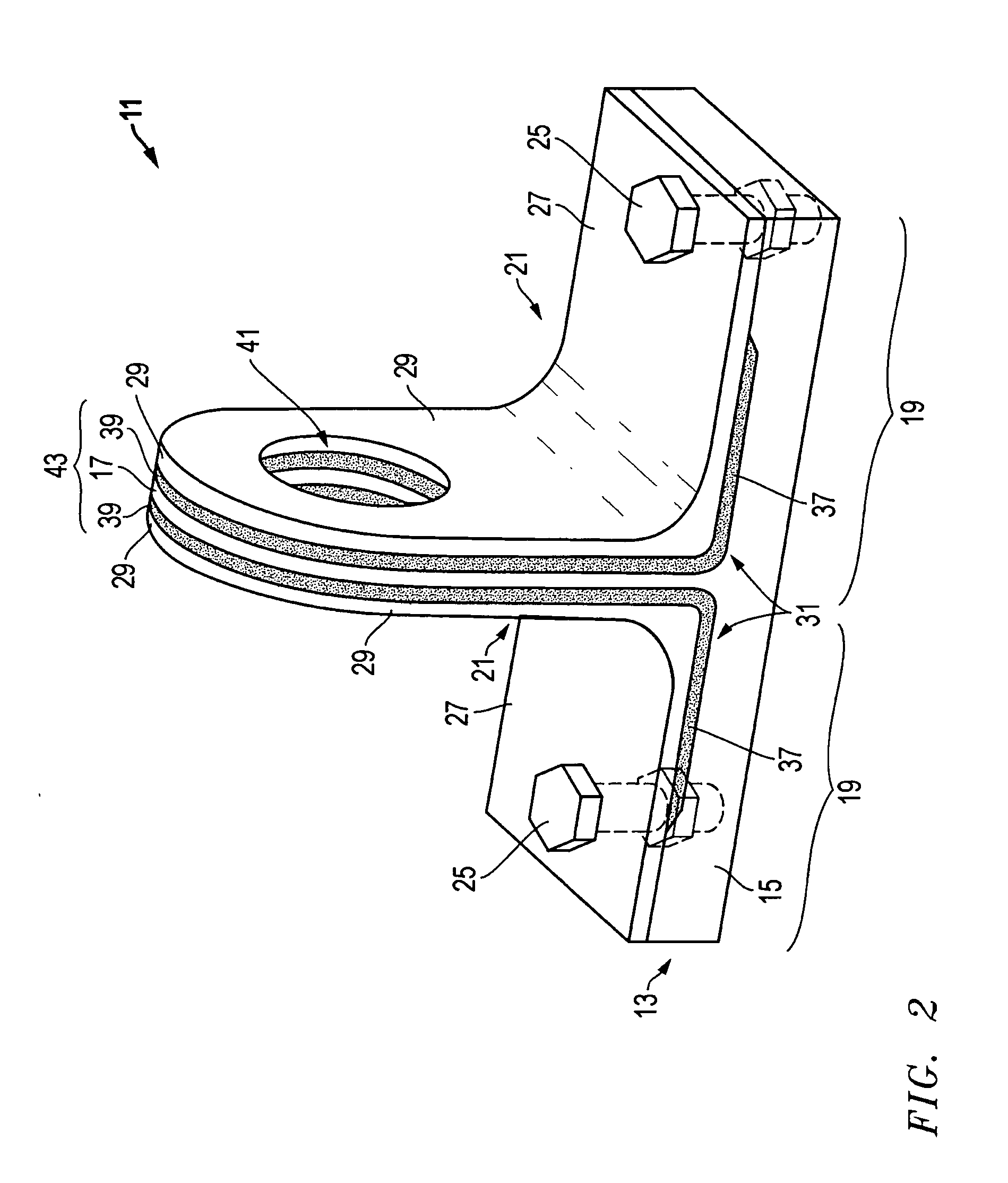System, method, and apparatus for structural lug formed from a combination of metal and composite laminate materials
a technology of composite laminate materials and systems, applied in the field of structural anchors, can solve the problems of composite structure ultimate failure mode, heavy weight of metallic lugs, fatigue cracking, etc., and achieve the effects of reducing the need for additional tooling
- Summary
- Abstract
- Description
- Claims
- Application Information
AI Technical Summary
Benefits of technology
Problems solved by technology
Method used
Image
Examples
Embodiment Construction
[0017]Referring to FIGS. 1-5, embodiments of a system, method, and apparatus for a structural lug are shown. As shown in FIGS. 1-4, one embodiment of the structural lug 11 comprises a foundation 13 formed from a metallic material (e.g., metal, metal alloy, etc.). The foundation 13 has a base 15 and a tongue 17 extending from the base 15. In the illustrated embodiment, the tongue 17 extends perpendicularly from a central portion of the base 15 to bifurcate the foundation 13 into two lateral portions 19.
[0018]The lug 11 also comprises outer plies 21 that are formed from a metallic material and secured to the foundation 13. The outer plies 21 may be friction stir welded 23 (FIG. 1) to the foundation 13, secured to the foundation 13 with mechanical fasteners 25 (FIG. 2), or joined thereto via other means. The outer plies 21 may comprise a pair of L-shaped outer plies having base portions 27 and tongue portions 29.
[0019]A third major component of lug 11 is intermediate plies 31. Intermed...
PUM
| Property | Measurement | Unit |
|---|---|---|
| non-metallic | aaaaa | aaaaa |
| size | aaaaa | aaaaa |
| brittle failure | aaaaa | aaaaa |
Abstract
Description
Claims
Application Information
 Login to View More
Login to View More - R&D
- Intellectual Property
- Life Sciences
- Materials
- Tech Scout
- Unparalleled Data Quality
- Higher Quality Content
- 60% Fewer Hallucinations
Browse by: Latest US Patents, China's latest patents, Technical Efficacy Thesaurus, Application Domain, Technology Topic, Popular Technical Reports.
© 2025 PatSnap. All rights reserved.Legal|Privacy policy|Modern Slavery Act Transparency Statement|Sitemap|About US| Contact US: help@patsnap.com



